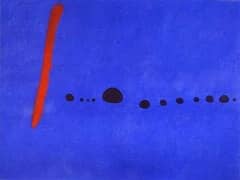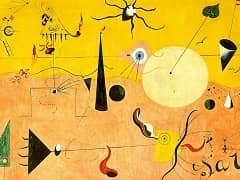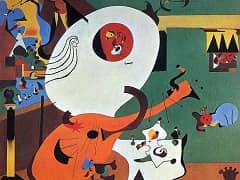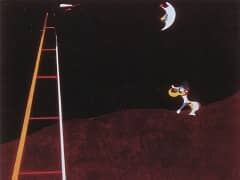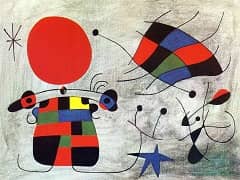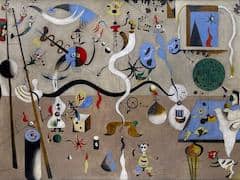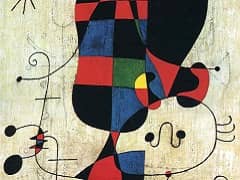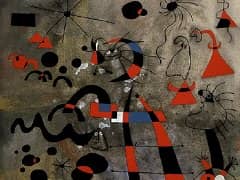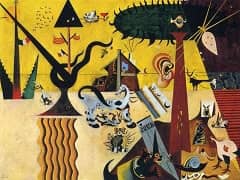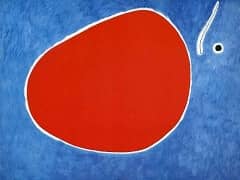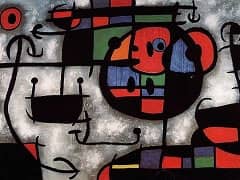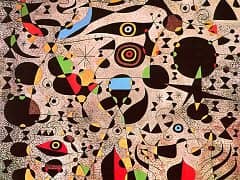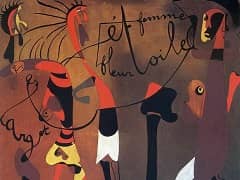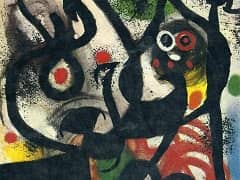Dancer, 1925 by Joan Miro

Miro's Dancer of 1925 is one of his sparsest but at the same time most poetic pictures. Having primed the canvas with brown paint, the artist then applied a layer of ultramarine blue in such a way that the brown color was still visible in the form of an edge. The blue layer was added in broad, rapid movements, leaving spots and traces of the paintbrush to indicate the sweeping movements of the painter's hand.
Movement is also indicated by the blue lines that have been added to the blue surface on the left. There are dotted circles which add up to a surging spiral, and the impression of movement is further enhanced by a wavy line at the top. The direction of the dance is indicated by a straight, uninterrupted top-to-bottom line. The Dancer herself, on the right, has been indicated quite wittily: a ball-shaped head, modeled in light and dark shades, linked by a thin line to a flashy, red heart, with symbolic genitals attached to its tip. The whirling feet seem like stylized notes and may have a musical meaning. In a letter to the art collector Rosengart, who now owns the picture, Miro describes how he came to paint it. The idea first came to him when he was spending his Christmas holiday in Barcelona, where he watched a dancer at a bar called Eden Concert which was quite well-known at the time. Having drafted a few small sketches, he set to work as soon as he was back at his studio in Rue Blomet, Paris. Miro himself was very fond of this painting which marked the beginning of an important phase in his development as an artist.


